| You are here: | Home > Bhutan > Topics > Economy > Yak Farming > Bumthang > Yaks in Bumthang |
 |
| Bhutan - Economy |
| Yak Farming |
|
 |
|
|
| Ura (Bumthang): A custom soon to be last herd of |
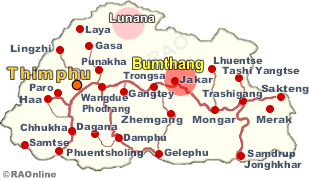 |
Shingkhar, Ura, Bumthang: A village, once synonymous with this domestic animal, now bids farewell to the last of them (and hails a new breed) The practice of herding yaks may soon come to an end in the Shingkhar valley of Ura, Bumthang, with the last herd of yak in the village waiting for their new owner to lift them. |
The last herd, surviving in Shingkhar that belongs to Sonamla, 75, will be grazing in highland of Sephu in Wangduephodrang.
He sold them to a herder there.
Shingkhar was a village known for its strong culture of yak herding, and their livelihood mainly depended on dairy products from the yaks.
But ever since the road reached the valley in the mid 1990s, Shingkhar started potato farming and dependence on yaks for a source of livelihood reduced.
Shingkhar's vast and lush pastureland is a visitor's delight, and an ideal place to rear livestock.
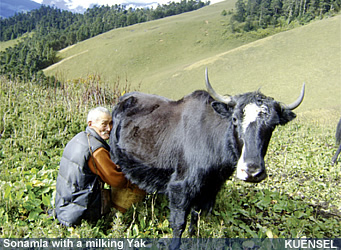 |
|
Over 100 tsedar yaks (yaks saved from being slaughtered), were released to graze on the land in Shingkhar.Sonamla, 75, who has lived with yaks since his youth, believes it was some kind of a sign.
All these years he did not give in to his children's persistent persuasion to sell yaks and give up yak hearding for a more comfortable life.
"We can't convince him, because his yaks are a part of him and herding them part of his life," one of his sons Kuenzang said
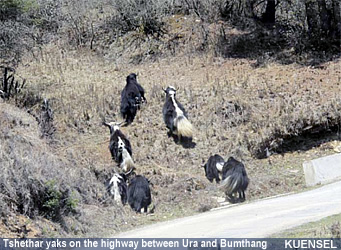 |
|
Eve since, for about a year, his 35-year old daughter, Tshering Dema, has been taking care of the yaks, alongside her chores at home, and tending to her three children and her ailing father.
"While yaks in summer should be taken to a higher altitude that requires days of walking, I only managed a few hours further from the village last summer," she said. "I have no one at home to look after my parents and children."
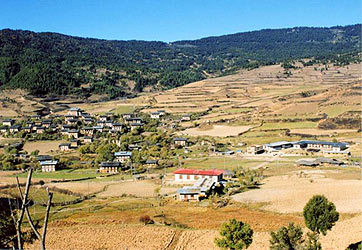 |
Ura Valley
|
"These yaks are on tsedar and there is no proper caretaker," she said. "I had to suggest my father that we sell our herd and he said that I call the shots."
The number of households owning yaks in Ura has been declining every year since a decade ago.
In 2006, farmers of Ura's four villages out of six reared yaks.
By 2007, yaks in Ura Madrong, the biggest village, disappeared.
Somthang villagers sold all their yaks in 2009.
Untilmid-2011 Shingkhar had two households, including Sonamla's, that still kept yaks.
When Sonamla's yaks leave Ura valley this year, a lone villager in Pangkhar will be the last to rear yaks.
Records with livestock extension officer in Ura, Phub Thinley, show that of 250 yaks in 2007 in the valley it dropped to 223 in 2008 and 207 in 2009.
In 2010, it fell to 180 and to 100 last year; most of them sold to herders of Sephu in Wangduephodrang.
He said, Sonamla had about 45 yaks, which once gone some time this year will leave the valley with only about 55 yaks.
Of the 40 households in Shingkhar, about 10 reared yaks.
Almost all households owned about four to five yaks, which they kept with households that owned more yaks.
"Like many age-old customs of livelihood, this one too has become obsolete," a farmer Sonam said. "With education and the pace with which the country is developing, our children will not want to do this."
Meanwhile, Sonamla and his daughter awaits the buyer from Sephu to take away their 45 yaks, of which 15 are milking ones that graze on the green pastures of Shingkhar.
| Contributed by Samten Yeshi, KUENSEL, Bhutan's National Newspaper, 2012 |
|
|
| more information |
|
|
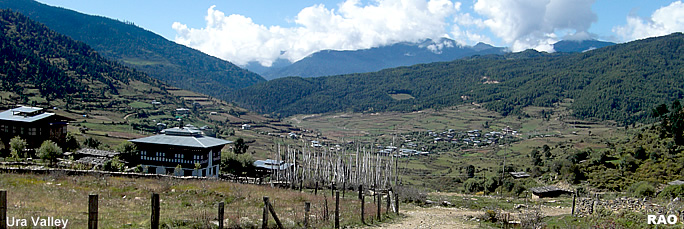
|
|
|
|
|